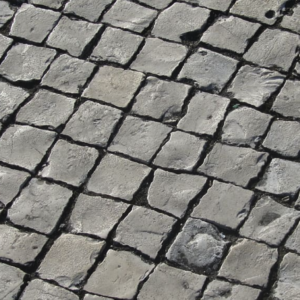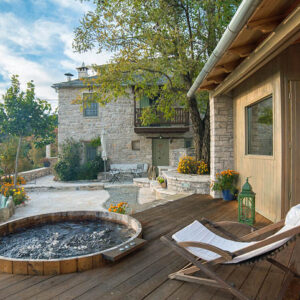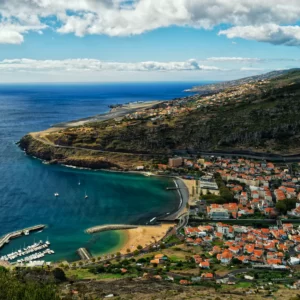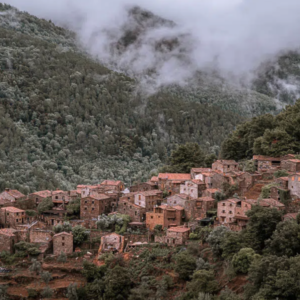
Introduction
Albufeira, located in the southern region of Portugal known as the Algarve, is a city with a rich and diverse history. From its ancient roots to its transformation into a popular tourist destination, Albufeira has seen it all. Understanding the city’s past is crucial in appreciating its present and shaping its future. By exploring the various eras that have shaped Albufeira, we can gain a deeper understanding of the city’s identity and the importance of preserving its heritage.
Albufeira’s Ancient Roots: Tracing the City’s Prehistoric Origins
Before Albufeira became a bustling city, it was home to prehistoric settlements. Archaeological excavations have uncovered artifacts from the Neolithic period, indicating that humans have inhabited the area for thousands of years. The most significant prehistoric site in Albufeira is Cerro da Vila, a Neolithic settlement that dates back to around 2500 BC. This site provides valuable insights into the daily lives and customs of the people who lived there.
Cerro da Vila is believed to have been a fishing village, as evidenced by the abundance of fish bones found at the site. The discovery of pottery, tools, and other artifacts also suggests that the inhabitants engaged in agriculture and trade. The importance of Cerro da Vila lies in its ability to shed light on the early history of Albufeira and its connection to the sea.
The Roman Era in Albufeira: Discovering the Legacy of Conimbriga
During the Roman era, Albufeira was known as Baltum and was an important trading port. The nearby city of Conimbriga played a significant role in shaping Albufeira’s history during this time. Conimbriga was one of the largest Roman settlements in Portugal and served as an administrative center for the region.
The ruins of Conimbriga are a testament to the grandeur and sophistication of Roman civilization. Visitors can explore the well-preserved mosaics, bathhouses, and villas that once stood in this ancient city. The Roman influence on Albufeira can also be seen in the city’s architecture and infrastructure, with remnants of Roman walls and roads still visible today.
The Moors in Albufeira: Unpacking the City’s Islamic Heritage
In the 8th century, Albufeira fell under Moorish rule during the Islamic conquest of the Iberian Peninsula. The Moors brought with them their culture, architecture, and agricultural practices, leaving a lasting impact on Albufeira. One of the most significant remnants of the Moorish period is the Moorish castle, which sits atop a hill overlooking the city.
The Moorish castle served as a defensive structure during this time and played a crucial role in protecting Albufeira from invasions. Today, visitors can explore the castle and enjoy panoramic views of the city and coastline. The influence of Islamic culture can also be seen in Albufeira’s narrow streets, whitewashed houses, and decorative tiles.
Albufeira’s Medieval Past: Exploring the Fortifications of the Old Town
During the medieval period, Albufeira was fortified to protect against pirate attacks. The city was surrounded by walls and towers, which still stand today as a testament to its defensive past. The medieval walls and towers provide a glimpse into Albufeira’s history as a strategic stronghold.
The most prominent feature of Albufeira’s medieval fortifications is the Castle of Paderne. This castle is one of the best-preserved examples of medieval military architecture in Portugal. It served as a defensive structure during conflicts between Christians and Moors and played a vital role in protecting Albufeira.
The Age of Exploration in Albufeira: Uncovering the City’s Maritime History
During Portugal’s Age of Exploration in the 15th and 16th centuries, Albufeira played a significant role in maritime trade and exploration. The city’s strategic location along the coast made it an ideal port for ships traveling to Africa, Asia, and the Americas. Albufeira became a hub for the fishing industry, with fishermen setting sail to distant waters in search of valuable catches.
The fishing industry became a vital part of Albufeira’s economy during this time, providing employment and prosperity to the local population. The city’s maritime history can still be seen today in its traditional fishing boats and the annual Fisherman’s Festival, which celebrates the city’s seafaring heritage.
Albufeira’s Golden Age: The Rise of the Fishing Industry in the 19th Century
In the 19th century, Albufeira experienced a period of growth and prosperity due to advancements in fishing technology. The introduction of steam-powered boats and improved fishing techniques allowed fishermen to venture further out to sea and increase their catches. This led to a boom in the fishing industry and brought wealth to the city.
The growth of the fishing industry had a significant impact on Albufeira’s economy and population. The city became known for its sardine canning factories, which employed many locals and contributed to the city’s economic development. However, as technology continued to advance, traditional fishing methods began to decline, leading to a shift in Albufeira’s economic focus.
The Impact of World War II on Albufeira: Examining the City’s Role in the Conflict
During World War II, Albufeira played a crucial role as a base for Allied forces. The city’s strategic location along the coast made it an ideal spot for monitoring enemy movements and protecting shipping routes. Albufeira’s infrastructure was expanded to accommodate the military presence, with the construction of airfields and defensive structures.
The impact of the war on Albufeira was significant, with many buildings and infrastructure being damaged or destroyed. However, the city’s role in the conflict helped shape its future as a tourist destination. After the war, Albufeira began to rebuild and attract visitors who were drawn to its natural beauty and historical significance.
The 20th Century Transformation of Albufeira: From Fishing Village to Tourist Destination
In the second half of the 20th century, Albufeira underwent a transformation from a small fishing village to a popular tourist destination. The city’s natural beauty, with its stunning beaches and picturesque coastline, attracted visitors from around the world. The growth of tourism brought economic prosperity to Albufeira and led to the development of hotels, restaurants, and other amenities.
The impact of tourism on Albufeira’s economy and culture cannot be overstated. The city’s population grew rapidly, and new neighborhoods were built to accommodate the influx of tourists. However, this rapid growth also presented challenges, such as overcrowding and environmental concerns. Balancing the needs of tourism with the preservation of Albufeira’s heritage became a priority for city officials.
Preserving Albufeira’s Heritage: The Importance of Historical Conservation Efforts
With its rich history and diverse cultural heritage, preserving Albufeira’s historical sites and artifacts is crucial in maintaining the city’s identity. Efforts have been made to protect and restore important landmarks, such as the Moorish castle and the medieval walls. Museums have been established to showcase Albufeira’s history and educate visitors about its past.
Conservation efforts also extend to the natural environment, with initiatives in place to protect the coastline and marine ecosystems. Sustainable tourism practices are being promoted to ensure that Albufeira’s natural beauty is preserved for future generations. By preserving its heritage, Albufeira can continue to attract visitors while maintaining its unique character.
Albufeira Today: Reflecting on the City’s Past and Future
Today, Albufeira is a vibrant and bustling city that continues to attract tourists from around the world. Its rich history is evident in its architecture, cultural traditions, and archaeological sites. Understanding Albufeira’s past is crucial in shaping its future, as the city strives to balance economic development with the preservation of its heritage.
Sustainable tourism has become a focus for Albufeira, with efforts being made to promote responsible travel and protect the environment. The city’s natural beauty, combined with its historical significance, makes it an ideal destination for those seeking a unique and authentic experience.
Conclusion
Albufeira’s rich history is a testament to the city’s resilience and ability to adapt to changing times. From its ancient roots to its transformation into a popular tourist destination, Albufeira has seen it all. Understanding and preserving the city’s heritage is crucial in maintaining its identity and ensuring that future generations can appreciate its unique history. By celebrating its past, Albufeira can continue to thrive as a vibrant and culturally significant city.






